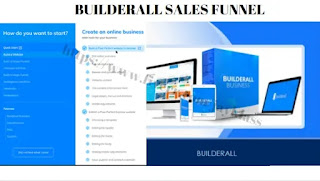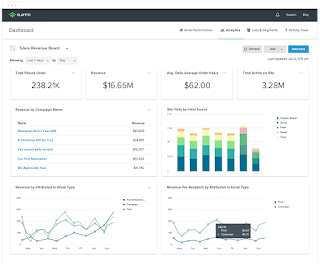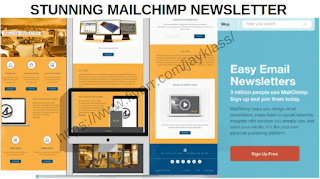Purchased funnel that convert traffic
There is a lot of debate surrounding the marketing funnel — from who owns it, be it marketing or sales, to whether or not it’s still relevant to today’s consumer buying process.
Here, I’ll explain what you need to know about the marketing funnel, and I’ll dive into recent changes and rising challenges for marketers. I’ll compare B2C and B2B uses of the funnel, break down the hype around the marketing vs. sales ownership debate, explain how the funnel can be flipped to create more leads, and explore nonlinear approaches to the funnel.
First, let’s establish a basic framework for the funnel, so we can better address these issues.
What is the marketing funnel?
The marketing funnel is a visualization for understanding the process of turning leads into customers, as understood from a marketing (and sales) perspective. The idea is that, like a funnel, marketers cast a broad net to capture as many leads as possible, and then slowly nurture prospective customers through the purchasing decision, narrowing down these candidates in each stage of the funnel.
Ideally, this marketing funnel would actually be a marketing cylinder, and all of your leads would turn into customers. Though this is not a reality for businesses, it is part of a marketer’s job to turn as many leads into customers as possible, thus making the funnel more cylindrical.
It’s important to note that there is not a single agreed upon version of the funnel; some have many “stages” while others have few, with different names and actions taken by the business and consumer for each. In the diagram below, we’ve done our best to pull out the most common and relevant funnel stages, terms, and actions so this information is useful to as many marketers as possible.
Marketing funnel stages and conversions
I’ll take you through the funnel stage by stage so you have a full understanding of how it works.

Awareness: Awareness is the uppermost stage of the marketing funnel. Potential customers are drawn into this stage through marketing campaigns and consumer research and discovery. Trust and thought leadership is established with events, advertising, trade shows, content (blog posts, infographics, etc.), webinars, direct mail, viral campaigns, social media, search, media mentions, and more. Here, lead generation takes place, as information is collected and leads are pulled into a lead management system for nurturing further down the funnel.
Interest: Once leads are generated, they move on to the interest stage, where they learn more about the company, its products, and any helpful information and research it provides. Here is an opportunity for brands to develop a relationship with the people in its lead database and introduce its positioning. Marketers can nurture leads through emails, content that is more targeted around industries and brands, classes, newsletters, and more.
Consideration: In the consideration stage, leads have been changed into marketing qualified leads and are seen as prospective customers. Marketers can send prospects more information about products and offers through automated email campaigns, while continuing to nurture them with targeted content, case studies, free trials, and more.
Intent: To get to the intent stage, prospects must demonstrate that they are interested in buying a brand’s product. This can happen in a survey, after a product demo, or when a product is placed in the shopping cart on an ecommerce website. This is an opportunity for marketers to make a strong case for why their product is the best choice for a buyer.
Evaluation: In the evaluation stage, buyers are making a final decision about whether or not to buy a brand’s product or services. Typically, marketing and sales work together closely to nurture the decision-making process and convince the buyer that their brand’s product is the best choice.
Purchase: You’re here! This is the last stage in the marketing funnel, where a prospect has made the decision to buy and turns into a customer. This is where sales takes care of the purchase transaction. A positive experience on the part of the buyer can lead to referrals that fuel the top of the marketing funnel, and the process begins again.
How does the marketing funnel differ for B2C and B2B brands?
To help you better understand how the marketing funnel differs for B2C and B2B brands, take a look at the modified diagram below, which outlines B2C and B2B consumer actions and conversions in each stage of the funnel.

Key differences between B2C and B2B marketing funnels:
- Most B2C consumers navigate the funnel alone or with a small group of trusted advisors (usually friends and family), while B2B consumers typically have a larger, cross-departmental buying group. The average B2B buying group is 5.4 people.
- B2C consumers may never directly interact with a company representative, especially on ecommerce websites, while B2B consumers typically interact with a sales representative in the lower end of the funnel.
Nonlinear funnels
Some experts argue that the marketing funnel is no longer relevant because the buying process is no longer linear.
Leads are coming into the funnel at different stages. Sometimes this happens because they are referred and already know they want to buy a brand’s product, so they jump in at the intent stage. It also might happen because they have pursued their own education and jump in at interest or consideration.
As access to information has increased due to technological advances (meaning, the rise of the internet), customers are increasingly doing their own research and depending on digital content to inform them about products. In fact, CEB reports that B2B customers are traversing 57 percent of the funnel on their own, before encountering a sales rep.
One alternative to the marketing funnel is McKinsey’s consumer decision journey, which employs a circular model to show how the buying process fuels itself and to highlight pivots or touch points.

However, some experts also doubt this approach. “Brands may put the decision at the center of the journey, but customers don’t,” write Mark Bonchek and Cara France in a Harvard Business Review article.
There still isn’t a perfect model, so both the customer decision journey and the marketing funnel will continue to be used by marketers, and are therefore still relevant.
Marketing vs. Sales: Owning the funnel
There is a heated debate happening in the marketing and sales worlds over who exactly owns the funnel.
One side argues that as consumers have become more dependent on digital content to inform their purchasing decisions, marketers have taken on more responsibility for the funnel, as they continue to nurture prospects through the purchasing process. Take a look at the diagram below to see how marketing and sales ownership of the funnel has changed.

However, there are even some who see the funnel as being split vertically, with both sales and marketing owning the full funnel. They argue that the sales people are increasingly becoming thought leaders to drive awareness by doing outbound outreach. In this scenario, both marketing and sales would work to nurture leads and prospects from awareness to purchase.
Flipping the funnel: Marketing and the customer experience
An increasingly common practice for marketing, sales, and customer service and experience managers is to “flip the funnel” into a customer experience funnel. This funnel outlines the process of turning customers into advocates, which in turn refuels the top of the marketing funnel by driving awareness and lead generation. Here’s our diagram of the customer experience funnel:

The customer experience funnel explained
We’ve distilled the most important stages of the customer experience funnel and explained them below.
Repeat: After a customer has made a purchase, the next step is to make them a repeat customer. This means improving retention and nurturing customers to make more and bigger purchases. Marketers continue bottom of funnel activities to encourage repeat actions by the consumer.
Loyalty: In the loyalty stage, customers develop a preference for a brand, beginning to identify with it and personalize products. This is where engagement is key, and marketers can help nurture this personal connection to a brand through community development, engagement, and outreach.
Referral: Once a customer is loyal to a brand, they are more likely to provide business referrals and recommend brand products.
Advocacy: Turning your customers into advocates is the ultimate evolution for nurturing current customers. Evangelism in the form of writing product reviews, posting about products on social media, and more can help drive more new leads for your marketing funnel. Having an external recommendation not connected to a brand can strongly influence prospects. Marketers can work to develop their communities to better support advocates, ask them to participate in case studies, or engage them around consumer-generated content on social media.
The ultimate goals are to increase number and size of purchases and to drive more awareness and referrals to fuel the marketing funnel.







Very informative and impressive post you have written, this is quite interesting and i have went through it completely, an upgraded information is shared, keep sharing such valuable information. Website Design Experts
ReplyDelete